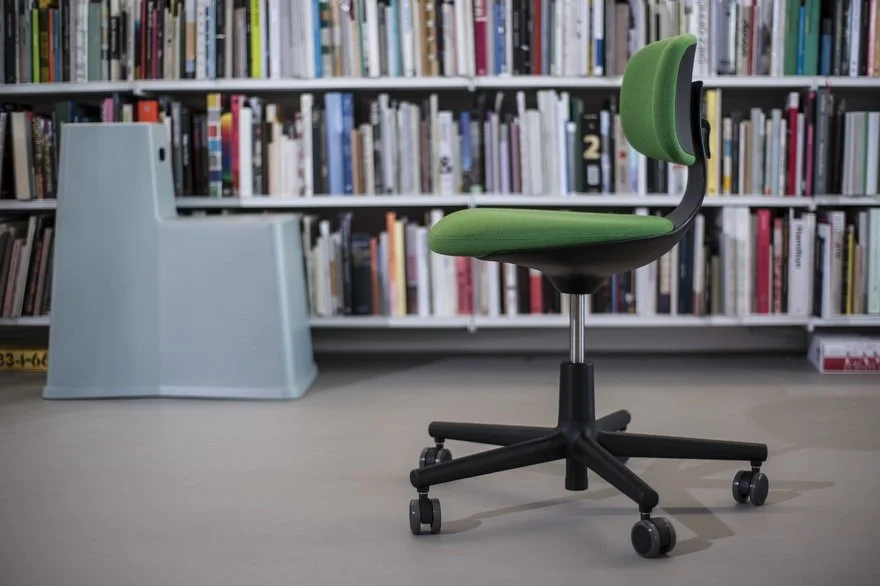In a sea of tricked-out office chairs at Milan Design Week, the Rookie chair designed by Konstantin Grcic for Vitra stood out as a more pared back version. The chair's clean silhouette boasts just the necessities and nothing more, offering only a few simple adjustments and basic cushion shapes. Grcic, known for designing more minimal products, didn't reduce the office chair for no reason, though. The Rookie Chair's simplicity actually stems from Grcic and Vitra's research on modern working styles in offices today, which led to the realization that people aren't always trapped at their desks like they used to be. So, how do you design furniture for people who don't sit often? We spoke with Grcic during Salone to learn more about Rookie and his thoughts on designing furniture for the modern office:
You've designed office chairs in the past. What makes this one different?
I think what makes this one different is its reduction to just a few key functions. For a long time there's been a tendency of adding functions to office chairs, making them more and more complex and machine-like. It stems from the idea of individualization, creating things that can be adjusted to fit perfectly to your size, body, weight, and so on.
But offices have changed, and the way we work has changed. A lot of people working in offices don't have their own chairs or desks anymore. We move around from one work situation to another, and that creates a different kind of need for a chair or a different kind of profile of a chair—one that is not the perfect machine. The customizable office chair is still needed, and don't get me wrong, I'm not saying that that is outdated. But I think that we need an additional concept for a chair, one made for people sitting for shorter periods of time. I sit in the chair for maybe 15 minutes, and then after me, you sit on the same chair. If it had too many adjustments, I'd adjust them for myself, and then you'd sit down for five minutes without bothering to adjusting it, which means you're sitting on the wrong chair.
Taking away a lot of adjustments and keeping just a few—like adjusting the height of the seats and the height of the backrest (and maybe not even that because it doesn't really matter for the short term)—is what we had in mind. I think this kind of chair will be placed in situations where we feel it needs a reduced, less dominant presence. It's simpler to the eye and in relationship to all the other furniture around it.
Circling back to your views on how behavior in the office has changed—how would you describe the modern day work style?
Some people are still doing work that requires sitting down all day, but I think more and more people are changing the way they do it. When you make a phone call, that's work, but you may not want to sit down anymore. So, you walk around the corridor to take the call. When you need to write something, maybe you want move to a clear table because you want to escape all of the distractions piled up on your desk. Then there's a moment where you sit at your desk because you do need all the piled up stuff around you. I think that movement defines what work is nowadays. Technology has made this possible because now we have mobile devices that allow us that freedom.



